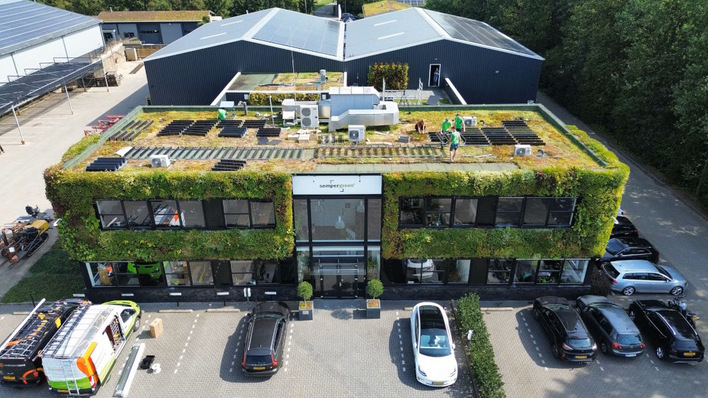Starting on Sunday 13 October, the Vattenfall Solar Team will take part in the Bridgestone World Solar Challenge in Australia as one of the favourites. The race from Darwin to Adelaide takes place every two years. To increase the performance of the car by what could be the winning margin, the Vattenfall team have fitted their car with an outer surface that is modelled on the skin of a shark. The microscopic structure of their skin allows sharks to move through the water with minimal resistance. And for the Solar Team’s racing car, called NunaX, the engineers have come up with riblets that work analogously going through air. The layer acts like a second skin that makes NunaX even more aerodynamic than previous editions of the car.
“We are very proud that we are able to use shark skin”, said Max van der Waals, aerodynamics expert of the Vattenfall Solar Team at the presentation of the new vehicle. “We have been competing in this race for 20 years and this is the first solar car that uses this technology. Even regular cars hardly ever get to use it.”
Powered by gallium solar cells
Shark skin has already proven its value on racing planes, Olympic bobsleighs and as part of ocean-going racing yachts. The skin can be recognised by the rainbow-like sheen caused by light refraction.
But shark skin is not the only innovation the Vattenfall Solar Team uses to hopefully make their tenth race participation a success. In addition to solar power, NunaX also uses the power of the wind. Parts of the car are designed to act like a sail, enabling the car to use wind to its advantage. Also, at 131.6 kilograms, it is lighter than ever. It is powered by gallium solar cells, which are normally used in the aerospace industry. They are much more efficient than the conventional silicon cells used in the mass market. Instead of the layer of glass that would normally be used to protect solar cells, the team has been applying their own protective coating to save weight. This coating contains prisms that ensure that the light always strikes the solar cells at a right angle.
53 teams from 24 countries
Happening every two years, the Bridgestone World Solar Challenge will start on 13 October and last four days. It is a 3,000-kilometre race through the Australian outback. A total of 53 teams from 24 countries are taking part. Of these, 30 teams are in the Challenger class and 23 in the Cruiser class. The aim of the race is to push the limits of technology and promote the use of sustainable energy.
The Vattenfall Solar Team is comprised of students from Delft University of Technology, and they have already won the soar race in Australia seven times. On two occasions they finished second. The team also won the Sasol Solar Challenge in South Africa three times.
In spite of the recently announced accident during a trial run that is said to have done “serious damage to the solar car,” the Vattenfall Solar Team have pronounced that they “will do everything in our power to get the car ready in time for the race” on Sunday. (mfo)








